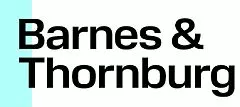- within Insurance and Real Estate and Construction topic(s)
- with readers working within the Insurance and Utilities industries
The National Labor Relations Board (NLRB) often changes its stances on certain issues when there is a change in administration. One of the higher profile areas where this has been the case over the last 15 years or so is the NLRB's standard for evaluating "joint employment." On Oct. 26, 2023, the agency reverted to the standard used by the board appointed by former President Obama.
According to an NLRB press release: "Under the new standard, an entity may be considered a joint employer of a group of employees if each entity has an employment relationship with the employees and they share or codetermine one or more of the employees' essential terms and conditions of employment, which are defined exclusively as: (1) wages, benefits, and other compensation; (2) hours of work and scheduling; (3) the assignment of duties to be performed; (4) the supervision of the performance of duties; (5) work rules and directions governing the manner, means, and methods of the performance of duties and the grounds for discipline; (6) the tenure of employment, including hiring and discharge; and (7) working conditions related to the safety and health of employees."
The release goes on to note that under this new standard, it will be easier for the agency to impose joint-employer findings: "[T]he 2023 rule considers the alleged joint employers' authority to control essential terms and conditions of employment, whether or not such control is exercised, and without regard to whether any such exercise of control is direct or indirect. By contrast, the 2020 rule made it easier for actual joint employers to avoid a finding of joint-employer status because it set a higher threshold that a putative joint employer must 'possess and exercise . . . substantial direct and immediate control' over essential terms and conditions of employment, which has no foundation in common law. "
The joint employment doctrine often is used by federal agencies to impose liability on two or more companies with respect to a group of employees, such as a staffing company and its client or a franchisor and franchisee. For example, the NLRB can use the doctrine to impose liability for violations of the National Labor Relations Act (NLRA) on multiple companies, and the agency has been at the forefront of changes to how joint employment is evaluated.
A finding of joint employment can have significant consequences for companies under the NLRA. From a practical perspective, each company found to be a joint-employer by the NLRB may be held liable for the unfair labor practices of their co-employers.
That is, companies not only need to account for their own compliance with the NLRA, they must also attempt to ensure compliance by any company with whom they are determined to be a joint employer. Accordingly, companies should note a new standard is in effect now that likely will make it easier for the agency to find joint-employer relationships.
The content of this article is intended to provide a general guide to the subject matter. Specialist advice should be sought about your specific circumstances.


